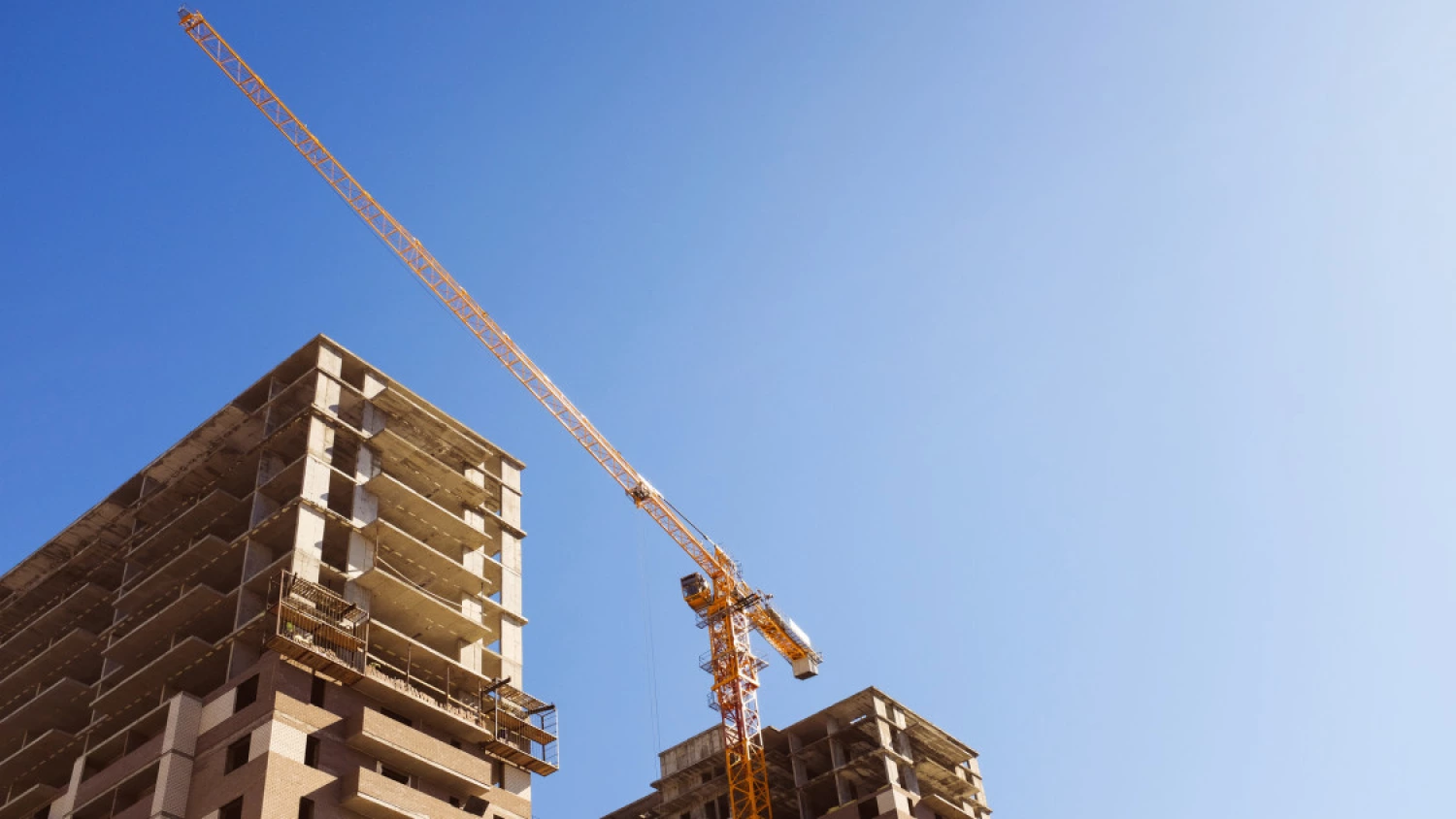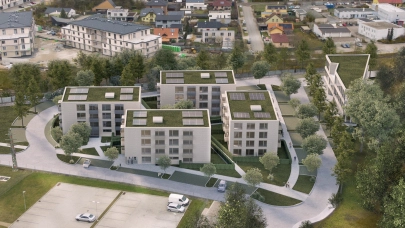
Since the beginning of the full-scale invasion, Kyiv’s primary residential market has stalled for some time with the number of transactions in 2022 significantly decreasing. In 2023, however, most developers are observing positive trends and slow but steady growth. Iryna Nastych summarised the situation in an article prepared by the Ukrainian Real Estate Club for Property Forum.
According to sales estimates based on surveys of developers in the LUN Syndicated Study, sales in the primary market decreased 8-12 times in 2022 compared to 2021, with sales of new housing in Kyiv and the region last year amounting to about 5-7% of the 2021 level.
Property Times conducted a survey of the capital's developers on changes in demand in the primary real estate market at the beginning of the second half of 2023 and found out what to expect by the end of the year.
Slow but steady growth
Almost all of the surveyed developers noted positive trends and slow but steady growth in demand for primary real estate.
"Since the beginning of spring, we have seen an increase in the number of transactions - from about 10 in March to several dozen in May. Deferred demand has also become more active. In particular, among the clients who have purchased real estate from Alliance Novobud over the past three months, 30% are those who were interested in our projects at the end of 2021 and the beginning of 2022. They returned with a clearly articulated desire to invest in real estate," comments Iryna Mikhalova, CMO of Alliance Novobud.
"There is a certain revival: people are interested, thoroughly considering options, the number of calls and visits to sales offices has increased, but there is no significant increase in transactions in the primary market - the trend of pent-up demand continues. This will continue until the end of the active phase of the war," says Dmytro Novikov, Marketing Director of City One Development.
Intergal-Bud has also recorded a significant revival in demand and an increase in the number of real estate purchase transactions. "May and June were the best months in terms of sales since the beginning of the full-scale invasion," says Anna Laevska, Commercial Director of Intergal-Bud.
"In our projects, we have had an increase of more than 35% of pre-war sales since spring. For example, in the Metropolis residential complex, since April 2023, we have seen an increase in demand for houses ready for completion in 2025. People buy apartments with a down payment of 30 to 50% and instalments of up to 4 years," says Daria Bedia, Marketing Director of DIM Group. "We also monitor the market situation and see that the level of real demand is averaging 5-7% per month and is currently at 20%. In general, this is a good signal and a consequence of the psychological adaptation of buyers and investors to external and internal circumstances. This is an incredible faith in the Armed Forces and a credit of trust in the market, which is important not to lose."
Drivers and factors that slow down the market
The main drivers of the market are the silence in the sky, peace on the ground, and positive news from the frontline. The reports of the return of Crimea and the success of the Ukrainian Armed Forces in advancing along the front line are especially inspiring, the press service of KAN Development notes.
As for market instruments to stimulate demand, experts believe that the main market drivers include the following:
- State mortgage program "eOselya" 3% for the military, scientists, teachers and doctors,
- State mortgage program "eOselya" 7%, which will become available from August 1 for Ukrainians who do not own residential real estate or own small living spaces,
- IDPs and people returning to Ukraine despite the difficult security and economic situation.
The "eOselya" program has given the real estate market a boost, but it mostly concerns the secondary real estate market. The number of transactions in the primary market under this program in the portfolios of developers is measured in units, sometimes in dozens.
"Over the entire period of "eOselya", we have more than four dozen transactions for the purchase of apartments under the program. And the largest number of sales occurred in May and June. This figure is not significant in the company's total sales. However, we see prospects if the pace of "eOselya" sales increases. After all, a total of 139,846 applications from 43,939 citizens were submitted from October 2022 to June 2023. And only 4% of the program participants received preferential mortgage loans. That is, with proper funding, "eOselya" can become a driver of effective demand for residential real estate. In addition, the Cabinet of Ministers has extended the program. And very soon, all citizens who need to improve their living conditions will be able to apply for participation," Intergal-bud said.
According to our experts, the expansion of the state mortgage program "eOselya", which provides an opportunity for all categories of citizens who do not have their own housing to receive loans at 7% from August 1, will revive the market, but will not cause a buying boom, as the war continues, incomes are not growing, and it is not clear how much credit will be provided under this program, that is, how many people will be able to use it.
Experts name the following factors as constraints:
- The ongoing war, shelling, terrorist attacks and threats from the enemy
- Underfunding of the"eOselya" program, which can become a huge driver with sufficient funding from the state
- Falling incomes of the population
- The slow revival of real construction - we are already seeing a shortage of finished housing at high stages of construction
"Demand is like a living organism: it becomes quiet and slows down in the event of a threat, and comes to life in times of relative security and calm. That is, security remains the main factor that affects demand, recovery and changes in the market," says City One Development.
Customer preferences
A real buyer is primarily looking for apartments in finished buildings or at the final stage, a trend noted by absolutely all developers. Firstly, there are fewer risks. And, secondly, the economic factor that stimulated demand for the start of construction has been levelled. Previously, projects with a low stage of completion were much cheaper than those already built. Now, the price difference is insignificant, and sometimes even non-existent.
"65% of transactions are for finished apartments: 30% of transactions relate to finishing in already built and commissioned buildings, when you can get the keys and start repairing, another 35% - to fully finished housing with repairs from the developer, when the buyer can move in and live," Daria Bedia cites figures from DIM analysts, "Another 20% of transactions are for residential buildings with readiness of 50% and above, and only 15% are for objects in the early stages of construction. Interestingly, a year ago, Ukrainians did not even look towards the so-called pit or the initial construction cycles, fearing uncertainty and possible long-term construction or even unfinished projects."
One-room and two-room apartments in commissioned buildings are in great demand. People are ready to buy them even at full payment. There is already a shortage of these lots. An interesting fact may be the demand from IDPs for two- and three-bedroom apartments, which are bought by several owners, as people left with their families. Demand for smart apartments is returning, primarily due to the low cost of such real estate.
"Before the war, people used to buy property of a slightly higher level than they could afford (in terms of the number of square meters, status of the residential complex or location), but now they are increasingly choosing properties based on their current needs and financial capabilities here and now. There is a greater demand for apartments with small living spaces. The attributes of luxury are no longer so popular, living on credit is impractical, and everyone is waiting for the economy to recover," KAN Development notes.
Specific requirements have emerged when choosing a new building, and attention to the developer's reputation has increased.
"Since the beginning of the war, safety has been the leading criterion. The type of building structures, the availability of underground parking or accessibility of shelters are the first things people ask about," says Dmytro Novikov. "Just like before the war, the developer's reputation mattered, and today this criterion has become even more important. Today, not many players in the market can boast of real achievements in the dynamics of construction. We are not talking about imitation, but about active construction during the war, the availability of financial resources for the developer to complete the construction projects and put them into operation."
"Demand for commercial real estate has also picked up. This is not only a profit for the developer, but also the activation of small and medium-sized businesses, taxes paid to the budget, new jobs, etc.," comments Iryna Mikhaleva, "In April-May, our sales department of brewery complexes shows a high interest of buyers in commercial premises. During this time, we managed to conclude more than 15 transactions for the acquisition of various spaces - both basements and ground floors of buildings."
Forecasts
Market turbulence and dependence on external factors make it difficult to make clear predictions about the future situation, but all market players remain cautiously optimistic.
The market has cautious hopes for the government's mortgage stimulus program "eOselya". If funded on a regular basis, this program could significantly increase the demand for housing. We are seeing banks and the government being active in financing the eHouse program. Undoubtedly, this will add energy to the market.
The demand for real estate in Kyiv and the region is currently 20-25% of the figures before the full-scale invasion. Provided that consumer sentiment remains similar to the current one, the market may grow by another 12-15 percent by the end of the year. Forecasting is still difficult, but we believe that by the end of 2023, demand will not change much compared to the situation today. We don't know what awaits us in the fall, it all depends on the nature of the hostilities, the enemy's intentions and the security of critical infrastructure.
As for prices, by the end of the year, they will gradually increase by 6-11 percent. Therefore, those who buy at the bottom of the market, i.e. now, will benefit significantly.
Daria Bedia, DIM: "Our task is to continue to return the level of real demand and reach the pre-war levels. Analyzing the market and demand potential, I think we will be able to return at least a quarter of the pre-war sales figures by the end of the fall."



